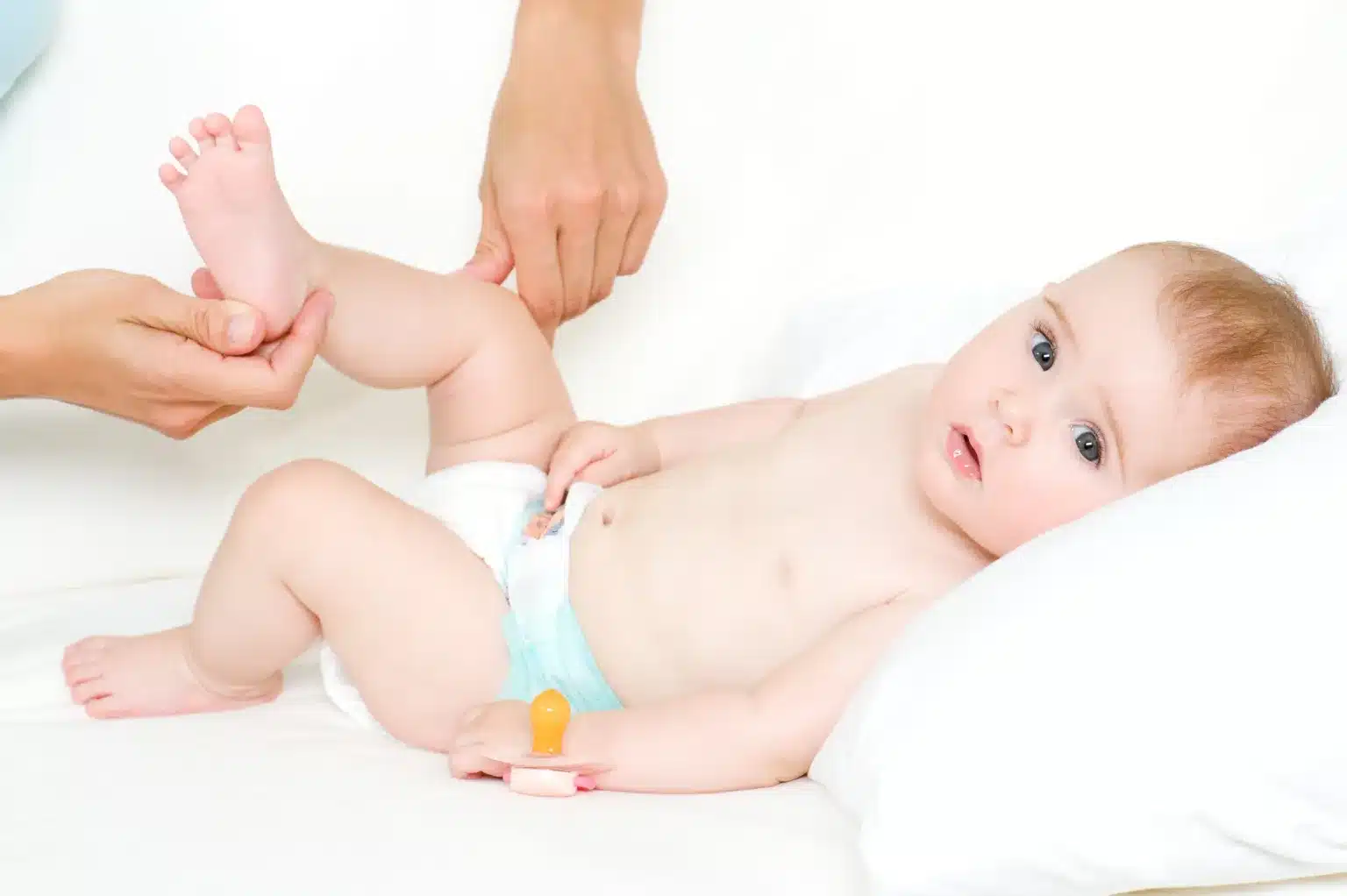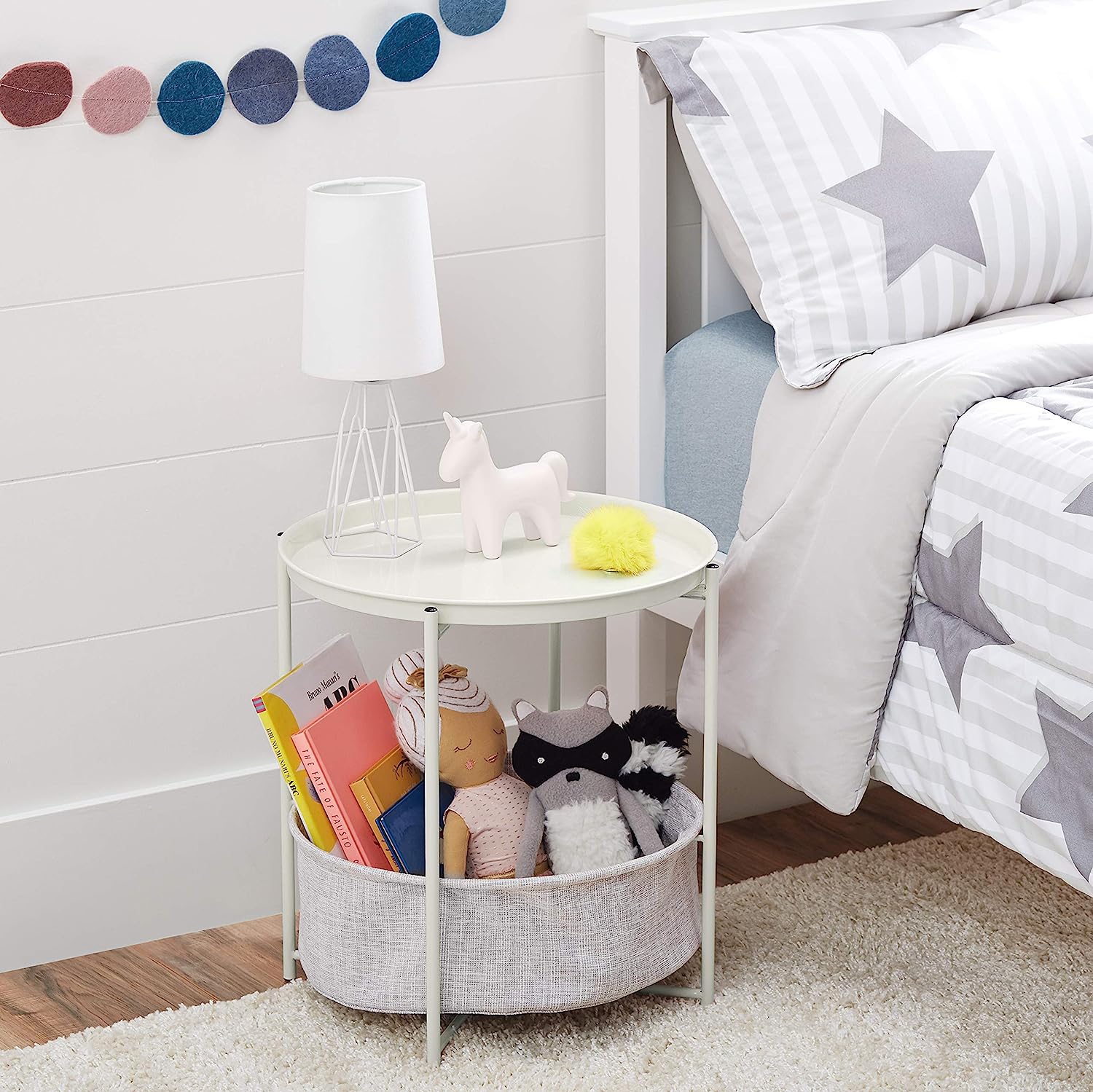Preparing for pregnancy and motherhood is exciting, rewarding, and challenging. As a first-time, pregnant mom, you likely have questions about getting your mind and body ready to nurture a baby for nine months.
This comprehensive guide draws key insights from experienced moms and medical experts to help you plan and prepare for pregnancy.
Adopting a Healthy Lifestyle Before Pregnancy
The journey begins even before you start trying to conceive. The pre-pregnancy phase is vital for optimising your health and establishing the building blocks of your baby’s growth and development. Medical experts recommend making a checklist of lifestyle changes 3-6 months before conceiving.
Reaching a Healthy Body Weight
Being overweight or underweight can negatively impact fertility and lead to pregnancy complications like gestational diabetes or preeclampsia. Your OB/GYN can help determine your ideal conception weight based on your BMI. Losing or gaining weight sensibly through diet and exercise lays the groundwork for a smooth pregnancy.
Starting a Prenatal Vitamin Regimen
Prenatal vitamins formulated with extra folic acid prevent neural tube defects and support your baby’s brain, spinal cord, and organ development. Starting them 3 months before conception ensures adequate levels during early fetal growth. Ask your doctor to suggest the best prenatal multivitamin brand and dose for your needs.
Adopting an Optimal Fertility Diet
Your diet must incorporate plenty of fertility-boosting nutrients like iron, zinc, B12, vitamin D, and essential fatty acids. Some easy, research-backed tips include eating more green leafy veggies, healthy fats like avocado, omega-3-rich seafood, and citrus fruits. Hydration is also key – drink at least 8 glasses of water daily.
Exercising Regularly
Aim for at least 150 minutes of moderate activity like brisk walking or swimming per week. Regular exercise boosts fertility and circulation, builds stamina for labour, and prevents excessive pregnancy weight gain. Yoga helps relax muscular tension and relieve stress. But don’t over-train – exhausting workouts can negatively impact conception.
Taking Proactive Mental Health Steps
Anxiety and depression during the prenatal period are associated with premature birth, low birth weight, and developmental issues. Begin practising self-care through light exercise, meditation, journaling, or your favourite hobby. Seek counselling if you have troubling symptoms. Building this mental resilience will enable you to cope well with the ups and downs of pregnancy.
Removing Harmful Substances From Your Lifestyle
It’s vital to stop alcohol consumption, cease smoking, and avoid second-hand smoke exposure before pregnancy. Discuss with your doctor regarding quitting any needed prescription medicines that may pose fetal risks. Taking these proactive steps lowers your baby’s risk of birth defects and pregnancy complications.
Visiting Your Doctor Before Getting Pregnant
Once you start planning for pregnancy, your first step should be booking a preconception checkup. Here are some key things your OB/GYN will discuss in this vital visit:
Discussing Your Health History
Inform your doctor regarding any past or current medical conditions, prior pregnancy complications, allergies, medications, and supplements you take. This helps them assess any special care you may need during pregnancy. For instance, they may alter medicines that impact fetal development.
Screening for Hidden Health Issues
Based on your history, doctors may recommend undergoing laboratory fertility assessments, genetic carrier screening for diseases, or imaging tests to uncover undiagnosed issues. Diagnosing problems like hormonal imbalances, pelvic issues, chronic ailments etc., early on gives more prep time to optimise your health before conceiving.
Reviewing Immunization Status
Up-to-date on recommended vaccines like the flu, Tdap (tetanus, diphtheria, pertussis), chickenpox etc. bolsters your immunity and protects your unborn baby. Based on your vaccination records, your doctor can confirm if you need any new vaccines or booster shots.
Discussing Genetic Risk Factors
If you have a family history of heritable disorders, your physician may suggest genetic carrier screening tests for diseases like cystic fibrosis or Tay-Sachs. This lets you make proactive decisions about conception pathways or precautions to lower transmission risk.
Getting Pre-Pregnancy Nutrition and Lifestyle Guidance
Preconception counselling offers personalised medical advice on achieving healthy pre-pregnancy weight targets through diet and exercise. Your doctor will also review any lifestyle changes needed regarding smoking, alcohol consumption etc. These steps proactively boost fertility and improve maternal and fetal health outcomes.
Tracking Your Fertility When Trying to Conceive
Monitoring key fertility health parameters can pinpoint your ovulation patterns, maximise your conception chances, and help you plan well-timed intimacy. Here’s your conception checklist:
Noting Your Menstrual Cycle Details
Recording details about your period onset, length, consistency etc., for a few months gives insight into your usual cycle span. Cycles range from 21 to 35 days, so knowing your norm helps predict ovulation timing. Any significant deviations could suggest potential fertility issues.
Charting Basal Body Temperature
Elevated progesterone increases your basal or lowest body temperature by around 0.5°F after ovulation. Recording basal temperature every morning and tracking rises help confirm whether and when you ovulate. Free phone apps help compile your cycle data.
Checking Cervical Mucus Changes
Fertile, ovulatory cervical mucus is clear, slippery, and stretchy compared to non-fertile mucus. Daily cervical mucus checks starting from your period can pinpoint the start of the fertile window – when you’re ovulating and chances of conception are highest.
Using Ovulation Predictor Test Kits
Urine-based test strips detect the luteinizing hormone (LH) surge 24-48 hours preceding ovulation. Beginning on day 10 of your cycle, test for LH daily to identify the 1-2 peak fertility days for well-timed conception attempts. Continue till you confirm ovulation via temperature rise.
Selecting Your Pregnancy Healthcare Providers
Finding an experienced, supportive OB/GYN, paediatrician, and place of delivery are key preparatory steps for your due date. Here are some tips on choosing your providers:
Researching OB/GYN Practices
Look for an obstetrician-gynecologist you feel comfortable with and whose staff, location, and hospital affiliations suit you. Ask about their cesarean rates, medical philosophies, and willingness to adhere to your birth plans. Consult online reviews, too, before deciding.
Touring Prospective Birth Centers
Schedule visits to potential hospitals or birthing centres to experience their facilities and environment. Enquire about available childbirth prep classes, accommodation options post-delivery, rates, financial aid etc., before finalising your preference.
Zeroing in on a Pediatric Clinic
Look for paediatricians located close by whom you can reach easily for middle-of-the-night concerns. Ensure their well-child visit schedules align with vaccine guidelines. Also, consider their experience with newborns, insurance coverage, appointment availability, etc.
Signing Up For Childbirth Education Classes
Here’s an overview of key lessons covered in typical childbirth education courses and their value:
Learning Childbirth Stages and Pain Coping Methods
Understand how your cervix dilates during normal labour, the sensation of contractions building up, and your physical signs indicating labour onset. Review medication and non-medicated techniques like patterned breathing, hydrotherapy, yoga etc., which help tolerate contractions.
Studying Childbirth Procedures and Medical Interventions
Know common interventions like artificial rupture of membranes to induce labour, applying fetal monitors, giving IV fluids or oxygen, and assisting delivery via vacuum or forceps. Recognise danger signs needing an emergency cesarean. Go over cesarean risks and recovery needs.
Preparing for Your Hospital Stay and Discharge
Learn admission protocols, typical delivery workflows, postnatal inpatient procedures related to you and baby, and discharge criteria. Discuss baby feeding, umbilical cord, circumcision care etc. Address breastfeeding basics, pumping, and storing breast milk.
Brushing Up Infant Safety and Care Skills
Practice measures like placing babies correctly for sleep, giving sponge baths, taking temperature, making formula etc., to boost your newborn care confidence. Talk about vaccination schedules, well-child visits, car seat installation etc. too. Sign up for infant CPR instruction.
Creating Your Ideal Birth Plan Outline
While childbirth itself can be unpredictable, having a written birth plan ensures your preferences get communicated to your labour team when contractions hit hard and fast. Here are key elements to include:
Details on Your Labor Environment
Specify your desired setting – birthing center, hospital room. List objects like music players, focal points, snacks etc. which promote relaxation during labor. Include your birth coach(s) and any relatives you wish to be present.
Preferences Regarding Labor Interventions
Outline your wishes related to amniotomy, pain medications, intravenous fluids, fetal monitoring systems, episiotomy etc. Indicate conditions under which you approve interventions versus choosing natural tear risk. Clarify what degree of informed consent you expect before procedures.
Any Special Equipment Needs
State needs regarding birthing tubs, inflatable balls, squat bars, TENS devices etc. Bring your own if the hospital doesn’t provide them. Share relevant aspects like back problems requiring careful positioning or nitrous oxide instead of epidural.
Delivery Instructions
Vocalise what makes you feel safest and most satisfied while pushing, like hands-on guidance, warm compresses, mirrors, slow-controlled crowning etc. Specify fetal monitoring and assisted delivery limits – use vacuum over forceps. Describe ideal placenta delivery handling too.
Postpartum Recovery Preferences
List any cultural/religious birth traditions that boost your emotional comfort during the sensitive postpartum period, like special prayers, candles, music etc. Share your desired rooming-in practice and infant feeding intentions. Clarify post-birth self-care expectations regarding restroom assistance, pain relief, and baby care participation by nurses/your support team as needed.
Creating Your Postpartum Recovery Plan
Those initial post-delivery weeks can feel overwhelmingly busy. Prepare and stock up on the essentials you’ll need ahead of time using this checklist:
Shopping for Postpartum Recovery Essentials
Gather supplies like high-absorbency maxi pads, disposable underwear, witch hazel pads, and Epsom bath salts to handle lochia discharge and swelling. Stock puzzle books, lip balms, lotions etc., to treat yourself. Buy a squirt bottle and cooling gel pads to ease urination.
Setting Up Space for Breastfeeding and Pumping
A rocking chair, pillows, nursing covers, etc., is handy to support comfortable breastfeeding positions. Get a hospital-grade breast pump if you are planning to pump. Purchase milk collection bags and bottles to store your liquid gold!
Planning Your Postpartum Meals and Snacks
Stock your freezer with nutritious single-serve meals, soaked grains, smoothies etc. which your family can reheat when you need to rest. Keep nighttime hydration and snacks like crackers, nuts, and fruits by your bedside for easy nourishment during late-night nursing sessions.
Blocking Off Recovery Time in Your Calendar
Protect your postpartum healing by cancelling existing commitments which can wait. Give home and work contacts at least 6 weeks’ notice about your temporary unavailability for non-urgent obligations. Set up an auto-responder email informing well-wishers that you’ll contact them when you’re ready for visitors.
Arranging Extra Household Help
Hire a postpartum doula to assist with baby changes, family meals etc. Request friends/family to drop off cooked dishes or help with chores like laundry for a month. Secure contact info of house cleaners, and grocery/meal delivery services in case extra assistance gets needed.
Preparing Your Home Environment for Baby
Transforming your living space into a safe, welcoming haven for your little one takes some preparation. From decorating the nursery to baby-proofing spaces, here’s your trimester-wise to-do list:
| Task | Second Trimester Checklist | Third Trimester Checklist |
| Nursery Setup | Assemble crib, dresser, and glider. Decorate walls. | Set up diaper changing station. Get the bassinet ready. |
| Sleep Environment | Install blackout curtains. | Stock up on postpartum care supplies. |
| Safety Prep | Wash all baby linen and clothes. | Install baby safety gates, locks, plugs |
Prioritising Sibling Adjustment
Positive emotional associations with the new baby facilitate smooth adaptation among young kids. Create opportunities for them to engage through play – feel stuffed animal kicks in your belly, sing lullabies to dolls. Honest conversations expressing empathy help older siblings process complex feelings too.
Preparing Pets for Baby’s Homecoming
Expose dogs/cats to baby stimuli like powder scents gradually. Rub toys on baby items, then praise pet interactions with them. Set aside special pet-focused rituals amid baby demands. Install toddler gates keeping high-traffic nursery/feeding areas out-of-bounds for now. Visit the veterinarian for anxiety medication if needed.
Self-Care Rituals During Your Third Trimester
As exciting countdown milestones approach, pamper yourself through relaxing activities which nourish your mind and body. Here are rejuvenating ideas expectant moms can indulge in weekly:
- Prenatal massages – Enjoy monthly 60-minute pregnancy massages ease back tension and balance stress hormones
- Meditation – Spend a few minutes daily repeating mantras lovingly addressing your unborn baby
- Yoga – Practice the child’s pose, and relax joints through gentle prenatal stretches
- Pedicures – Treat yourself to biweekly pedicures, leaving toes sandal-ready before swollen feet ebb post-birth
- Babymoon trips – If permitted medically, take a quick weekend getaway for quality couple time
- Baths – Immerse in warm Epsom salt soaks, playing soft instrumentals to drown out pregnancy aches
- Journaling – Jot down quick “love notes” for your future son/daughter
While this by no means covers every preparation detail on your journey, hopefully, it offers numerous insightful pregnancy planning tips curated specially for first-time moms. As you check off these self-care activities from your trimester milestones, don’t forget also to pause and cherish the beautiful phases of this wondrous transition into motherhood.
When in doubt or overwhelmed, don’t hesitate to contact your expanding village of experienced moms, relatives, and medical experts for advice or reassurance. Soon enough, when your precious little one rests blissfully in your arms, the stress of planning will transform into awestruck moments of joy and gratitude.






























